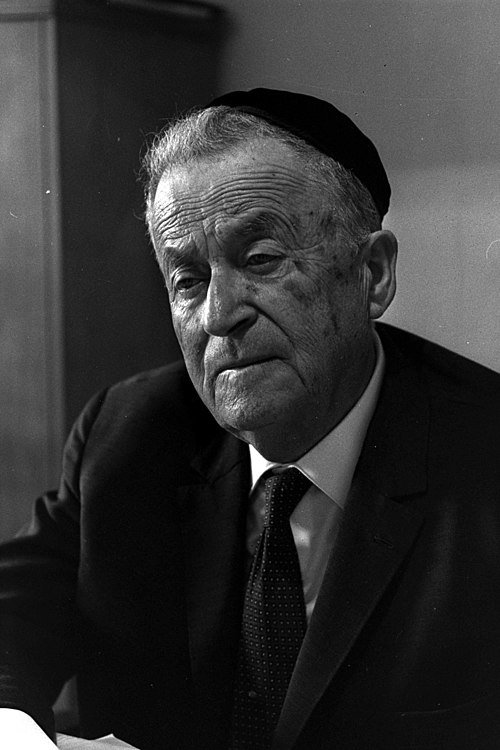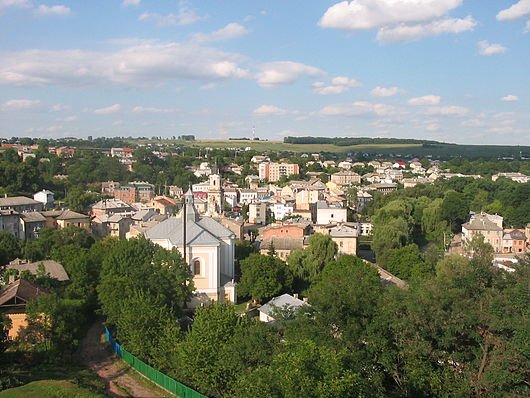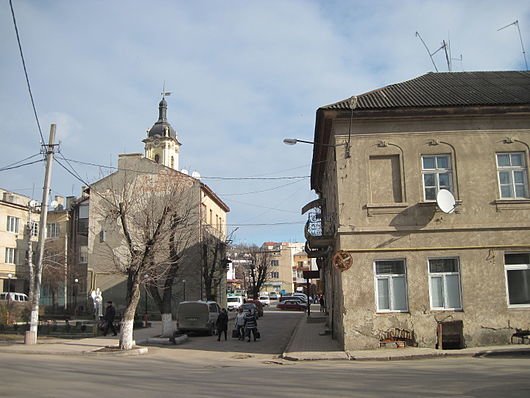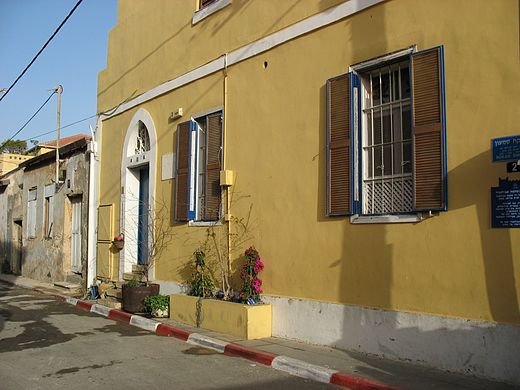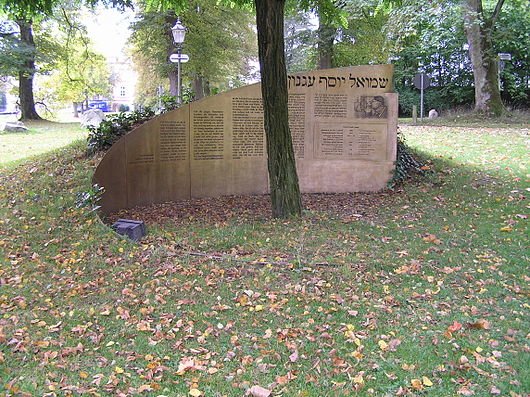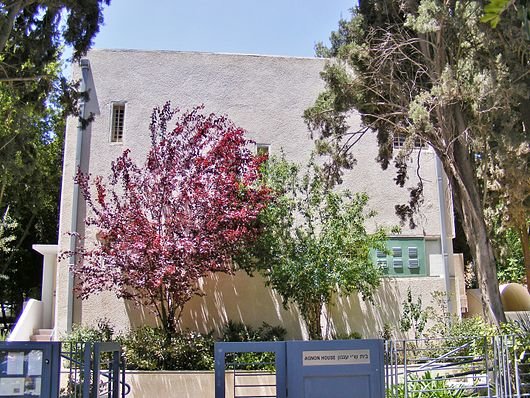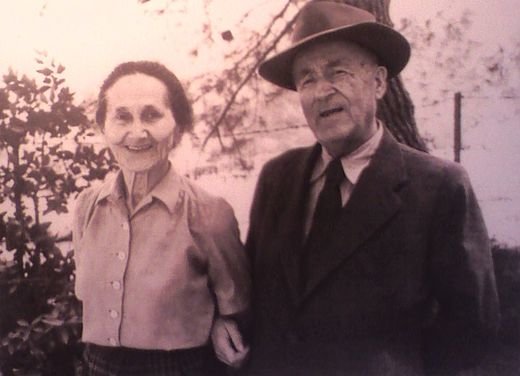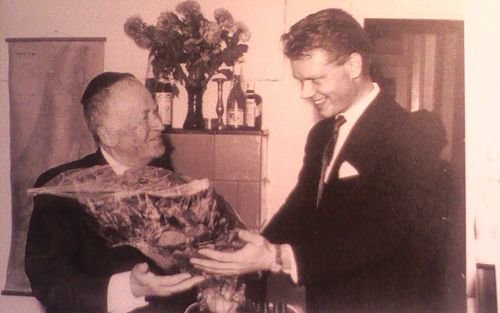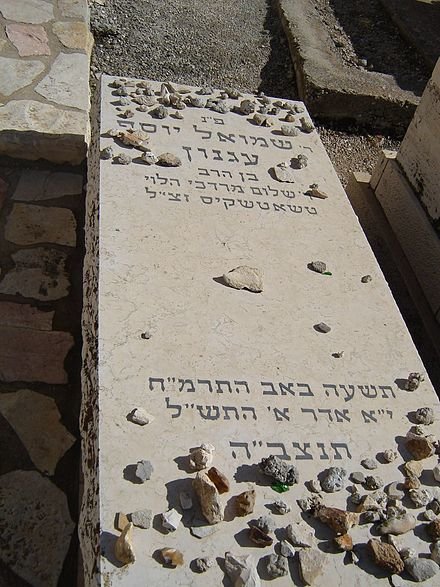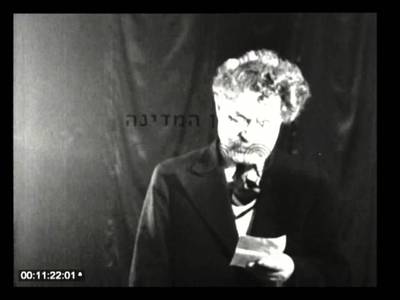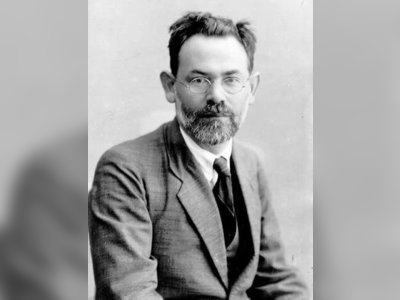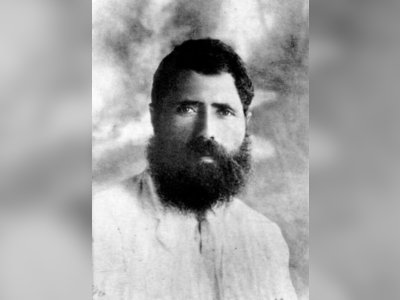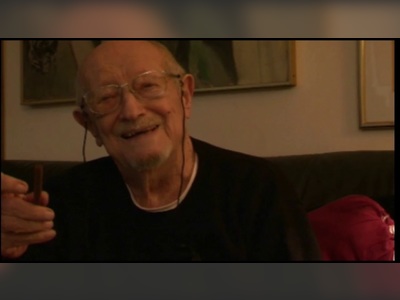Samuel Joseph Agnon: A Literary Luminary of the Modern Era
Samuel Joseph Agnon, also known by the abbreviated name "S.Y. Agnon," was one of the most prominent Hebrew writers of the modern age. He was awarded the Nobel Prize in Literature in 1966 and twice received the Israel Prize for Literature in 1954 and 1958.
Agnon was born in Buczacz, in Eastern Galicia (now part of Ukraine) on the 18th of Av, 1887 (August 8, 1887). His given name at birth was Samuel Joseph H. Levy Czaczkis (or in the Yiddish spelling, Tshatschkis or Tshatschkes). In 1908, he immigrated to the Land of Israel while still a young writer and continued his literary work there. In 1912, he moved to Germany for 12 years before returning to the Land of Israel in 1924, where he remained until the end of his life.
His first published story in the Land of Israel, in October 1908, was titled "Agunot," and it was after this story that he changed his name to Agnon. Agnon published many books during his lifetime through the Shoken publishing house, primarily established for him, and his books were the first to be published there. After his death, his daughter, Emuna Yaron, published many of his unpublished manuscripts.
Agnon's works have been translated into numerous languages and have received acclaim and recognition worldwide. His writings explore topics related to the Jewish people, poetic prose, psychology, and many other subjects. Among his notable works are the novels "The Bridal Canopy," "A Guest for the Night," "Yesterday and Tomorrow," the novella "A Simple Story," and the novellas "And the Crooked Shall Be Made Straight," "In the Heart of the Seas," and "Tehilah."
Samuel Joseph Czaczkis was born in the town of Buczacz, part of Eastern Galicia, which was under the rule of the Austro-Hungarian Empire, on the 18th of Av, 1887. In later years, Agnon claimed that he was born on the 9th of Av in 1888, initially to avoid military service, but later, it seems, to create symbolic significance around his birthdate.
Agnon was the eldest son of Esther and Shalom Mordechai Czaczkis, who held a rabbinical title but worked in the fur trade. He had four siblings: one brother and three sisters. At the age of three, Agnon began his education at home and continued until he was nine, after which he began studying Talmud with a group. About a year and a half later, he stopped studying in this manner and received his further education from his father.
Agnon once stated, "From him, I received most of my limited literary education, and he also instilled in me the spirit of poetry." When he was eight years old, Agnon began writing in Hebrew and Yiddish, and in his youth, he avidly read the works of Enlightenment writers and classical literature, including the works of Goethe, Schiller, and Shakespeare, as well as the works of Scandinavian writers such as Knut Hamsun, Bjørnstjerne Bjørnson, and Jens Peter Jacobsen.
In 1903, at the age of 15, Agnon published his first work, a Yiddish poem about the Kabbalist Joseph Dela Reina, whom he would later also feature in his adult works. On the 33rd day of the Omer in the Hebrew calendar (Lag BaOmer), at the age of 16, he published his first Hebrew poem, "A Little Hero," in the Hebrew weekly newspaper "HaMitzpeh," which was published in Krakow. He signed it as "S.Y. Czaczkis." Regarding this, he wrote:
"Before this poem, I had published a ballad in the Yiddish language and appended to it, in Hebrew, an approval by Mendel Mann, the son of the Rebbe of Berdichev. In a multitude of things that I subsequently published, I did not do likewise. What made my heart glad when I read the poem in HaMitzpeh was that for the first time in my life, I saw myself in my city among the people of my place, not out of place, not using a foreign language. I saw my name and my poem in a Hebrew newspaper. I recognized my place and my language."
Young Agnon continued to publish his works, including poems, short stories, lists, and more, in Hebrew and Yiddish in newspapers and periodicals in Galicia.
In 1906 and early 1907, he worked as an assistant editor for Eliezer Rokeach at the Yiddish newspaper "Der Yudisher Veker" (The Jewish Herald), which was published in Stanislaviv and Buczacz between 1905 and 1907. Agnon also published some of his early works, both poetry and prose, in this newspaper. In February 1907, Agnon moved to Lwów (Lemberg in German, now Lviv, Ukraine), where he was invited by Gershon Shalom to serve as an assistant editor for the newspaper "Ha'Et." However, about a month and a half later, the newspaper ceased publication due to economic difficulties.
In 1908, Agnon made the decision to immigrate to the Land of Israel. On his way to the Land of Israel, he stopped in Lwów, where he was introduced to Eliezer Meir Lifschitz along with Yosef Chaim Brenner. Lifschitz recommended Agnon to Rabbi Benjamin, who served as an editor for the Hebrew newspaper "HaMitzpeh." In the third issue of "HaMitzpeh," published in October 1908, Agnon's story "Agunot" was published - his first work to be published in the Land of Israel, edited by Shmuel Yosef Ben Zion.
It was after this work that he adopted the pen name "Agnon" (derived from the title of the story), which eventually became his literary name, and, from 1924 onward, his official family name. At Benjamin's initiative, Agnon sent a translation of "Agunot" to Martin Buber, and it was published by Buber in the Zionist journal "Die Welt" in 1910. When Agnon compiled his collected works, "Agunot" was the earliest story included in the collection.
Additional stories by Agnon appeared primarily in the newspaper "HaPoel HaTzair" (The Young Worker) and also in "HaShiloach" (The Sent One) in Odessa, "HaTzafira" (The Dawn) in Warsaw, and other collections.
In March 1909, the poet Hayim Nahman Bialik arrived for his first visit to the Land of Israel, beginning in Jaffa. Shmuel Ben Zion introduced Agnon to Bialik, and Agnon subsequently joined Bialik on a tour of Jewish settlements in the Land of Israel. This marked the beginning of their friendship, which continued until Bialik's passing.
On May 24, 1909, Agnon published a poem in honor of Bialik's visit in the newspaper "HaPoel HaTzair." In 1911, Agnon published the story "The Novice and the Princess" in the newspaper "HaPoel HaTzair." A year later, in March 1912, Bialik's articles on his Land of Israel visit were published in the newspapers "HaMitzpeh" and "HaPoel HaTzair," including his literary impressions and thoughts on the young Hebrew literature emerging in the Land of Israel. Agnon's poem in honor of Bialik's visit and the story "The Novice and the Princess" also appeared in Bialik's book "Land of Israel," which was published in 1912.
In May 1912, after completing his first novel "And the Crooked Shall Be Made Straight," Agnon traveled to Jaffa to meet Bialik, who was visiting the Land of Israel once again. Bialik read the novel and was deeply impressed by it. This novel, Agnon's first, remained unpublished during his lifetime.
Agnon's literary activities in the Land of Israel were not his only focus during his time there. In March 1909, he participated in a congress in Jaffa where "HaPoel HaTzair" was founded. In August 1909, he went to Merhavia, and in 1910, he lived in Merhavia for an extended period, where he worked the land and also wrote. In 1911, Agnon was active in promoting Jewish National Fund (JNF) activities in Lwów, where he assisted in the distribution of JNF stamps.
During the years 1909-1910, Agnon wrote a number of essays. Some of them were about literature, while others were in the form of literary parodies or satire, as was customary in those days. His "Literary Bagatelles," which appeared in installments in the newspaper "HaPoel HaTzair," are an example of this.
At the end of August 1912, Agnon left the Land of Israel and traveled to Germany, where he resided for approximately 12 years, returning to the Land of Israel at the end of 1924.
Upon his arrival in Germany, Agnon first settled in Berlin. He met many well-known people in the Jewish community there, including Max Reinhardt, Martin Buber, Franz Rosenzweig, and others. He made a living by working in various jobs, including as a tutor and private teacher. During this time, he continued to write in Hebrew, primarily for the newspapers "HaShiloach" and "HaAkhdut." Many of his stories from this period, including "The Doctor's Divorce" and "The Lady and the Peddler," are set in Galician shtetls and deal with the lives of Eastern European Jews.
In 1921, Agnon published his novella "In the Heart of the Seas," which received critical acclaim and is considered one of his early masterpieces. The story explores themes of Jewish mysticism and the tension between tradition and modernity.
In 1924, Agnon returned to the Land of Israel with his family and settled in Jerusalem. He continued to write prolifically, producing many of his most famous works during this period. One of his most celebrated novels, "The Bridal Canopy," was published in 1931 and is considered a classic of modern Hebrew literature. The novel is a richly textured exploration of Jewish life in Eastern Europe.
Agnon's writing is characterized by its deep engagement with Jewish tradition and folklore, as well as its modernist narrative techniques. His work often delves into themes of Jewish identity, spirituality, and the tension between the old world and the new. Agnon's prose is known for its poetic and evocative language, which has earned him a reputation as one of the greatest stylists in Hebrew literature.
In 1966, Agnon was awarded the Nobel Prize in Literature, making him the first Hebrew writer to receive this prestigious honor. The Nobel Committee recognized him "for his profoundly characteristic narrative art with motifs from the life of the Jewish people." Agnon's Nobel Prize acceptance speech, delivered in Hebrew, reflected his deep connection to the Land of Israel and the Jewish people.
Throughout his career, Agnon received numerous other awards and honors, including the Israel Prize for Literature in 1954 and 1958. His contributions to Hebrew literature and his impact on the world of letters continue to be celebrated and studied to this day.
Samuel Joseph Agnon passed away on February 17, 1970, in Jerusalem, leaving behind a legacy of literary excellence and a body of work that continues to resonate with readers around the world. His writing remains an enduring testament to the power of literature to explore the complexities of human existence and the enduring traditions of a people.
- שמואל יוסף עגנוןhe.wikipedia.org

